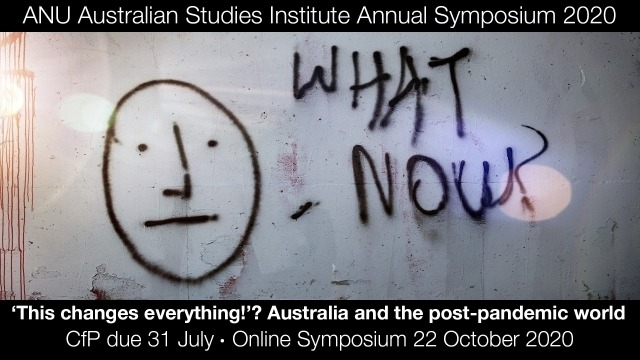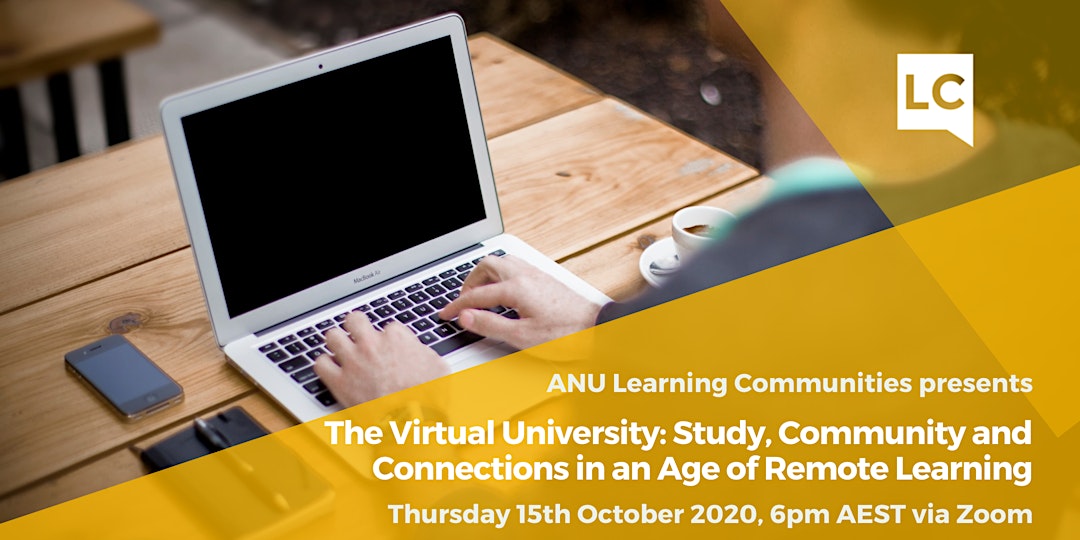Greetings from the Australia and the post-pandemic world symposium at the Australian National University. I am on a panel at on "education and online learning in a pandemic". By keeping international students away from Australian university campuses, COVID-19 has caused a sudden change in the way higher education is provided. The question now is: what of the future?
COVID-19 will hopefully be under control around the world in the next few years, but there may not be a return to business as usual at Australian universities. The geopolitical situation Australia finds itself in may again prevent international students from coming to Australian campuses and may also offer international alternatives to them.
The increasing number of domestic students attending Australian universities is also forcing a rethink of what it is for. When only a few attended university, they could expect a good job after, regardless of what they had studied. With many more at university, employers can be more selective, looking for those with relevant qualifications and practical experience.
Some academics long for the return to a golden age, when university was about the pure pursuit of pure knowledge. But Australian universities were founded to provide trained professionals and research to assist with economic development. What jobs should graduates now being trained for? Which research will help the Australian economy?
Australian universities are now considering what to do in the longer term after COVID-19. As it happens my MEd studies focused on how Australian universities could provide online education to international students, particularly in China and India.
Some have argued that we need to retain traditional campus based teaching to provide quality education. However, the research I have examined over seven years studying the topic indicates online learning is at least as good. Also at international conferences on the topic I have seen how my colleagues from China and India have embraced large scale online learning. What has been holding them (and I) back has been a widespread perception online learning is inferior, some of which is set in government regulations. COVID-19 has seen regulations preventing online learning waved and a grudging acceptance of it. As with fax machines, email, and the web, which were all considered suspect at first and not for official purposes, I suggest we are just past the tipping point, where online learning has become the default option. This is not before time, as in 2017 I predicted it would happen by 2020. ;-)
While plans for change by private institutions tend to be hidden away, public universities operate with a level of consultation. The Australian National University has taken the step of consulting widely with staff and making its change management plans public. This includes the Change Management Plan: College of Engineering and Computer Science (CECS), issued 15 October 2020. This is a detailed 39 page document covering the context of why change is needed, the current structure of the College and a proposed slimmed down structure with a new operating model using activity clusters.
The current CECS structure has four research schools, three institutes, a professional services group and the deputy dean. The proposed new structure would have three clusters, plus the professional services group and the deputy dean. The new clusters would be Engineering, Computing and Cybernetics. The first two of these do not appear a radical change, and the third is built around the groundbreaking work of the 3Ai Institute.
Having spent decades as a public servant, an office holder in the Australian Computer Society, honorary lecturer at ANU and a Visiting Scientist at CSIRO, I have been through many organisational restructures.
The question which I first look at in any restructure is "How does the effect me?". I don't get paid by ANU for being an honorary lecturer, so there are no financial consequences from a restructure (I donate money to ANU for prizes and scholarships). However, I have a professional and emotional investment in helping with research and teaching at the university. Currently I am delivering a learning module for the TechLauncher Program and supervising a project to provide better online learning. Can I continue with these, or what else can I help with in the new structure?
My area of interest is the human aspects of computing: professional ethics, human computer interfaces, communication and project skills for professional, how to teach these online and in the workplace. My background is in defence computing, so I also take an interest in cyber security. Currently I am associated with the RSCS Human-Centered computing (HCC) group. But where would I fit in the new organisation, if at all?
Looking at the proposed new structure there in no HCC group. The proposed new Computing cluster appears to be mostly "hard" science, with the human elements moved to Cybernetics. The closest match for my interests in Cybernetics appears to be "Systems" (that is systems engineering). This is of particular interest as it includes a proposal to provide professional development (PD) courses, which I have designed and delivered previously.
Considering the role of university more broadly, I encourage my students to think about who the customer is and what product they are being offered. The restructuring of the Australian university sector has to consider what products are to be produced, how, and who will be willing to pay for them. Universities produce two main products: educated professionals and research.
Clearly, the education of professionals has changed: this will take place more online and (hopefully) in the workplace, not on a campus. My rule of thumb is that the typical student will need to be on campus (or an educational setting in the workplace) for about 20% of their studies. Students have jobs, families and other commitments, which they must fit in their studies around. This requires greater flexibility.
Universities need to be able to provide education in smaller units (thus the move to micro-credentials). However, this is not simply a matter of replacing lectures with Zoom and moving exams online. This requires staff, and I suggest students, to be formally educated (not just trained) in how to teach and learn.
For several years I have been designing a set of micro-credentials, to teach computer students how to teach. Rather than think of teaching as something new employees at university are "trained" in, this could be part of the education of professionals. Advanced students would enroll in a course as part of their degree to learn to teach, while at the same time being tutors to less advanced students. The tutors would be paid to tutor, but would have to pay the university the usual course fee for their teaching course. This would enable enough time and resources to be made available to teach students to teach well.
Several times I have mentioned training for and in a workplace. This may sound like the sort of Vocational Education and Training (VET) done by TAFEs and not at university level. In practice TAFEs do a very good job of training (I have a a Certificate IV in Training and Assessment from the Canberra Institute of Technology). The upper end of VET training with the lower end of university education and there are useful possible synergies from this. Also there are forms of advanced workplace and vocational training at universities. Medical practitioners are educated on university campuses and then trained in teaching hospitals. The same can be done with other professions, including engineering and computing.
Under the Australian university system, institutions and individual academics, have to balance conflicting demands of research and education. A university's reputation is based primarily on research. The more theoretical and specialized the research, the more highly regarded it is. In terms of public benefit, applied research carried out by multi-disciplinary teams is more useful. However, universities and individual academics tend not to be rewarded for applied useful research.
Similarly with education, that provided by a leading researcher is considered more prestigious. However, researchers don't necessarily make good teachers. What makes good teachers is formal training in teaching, incorporating practice. However, students tend to select a university and program based on public rankings which are largely based on research reputation, not measured of education quality.
The dilemma for university and individual academics is to provide research and education of a high quality, while the measures used reward them for something else. One way is to change the system, such as through promotion of new metrics, such as the Webometrics Ranking of World Universities. This ranks 30,000 educational institutions, many more than other measures, and included non-university institutions, such as Australian TAFEs and private providers.
Another approach is to train academics, particularly new ones, in collaborative commercialization and educational techniques, which will benefit them, their institution, their students and the community.
ps: A very simple low cost ideas is "Student Ambassadors: One student in each on-campus activity monitors the chat from those remote by video and alerts the room of anything relevant.".



